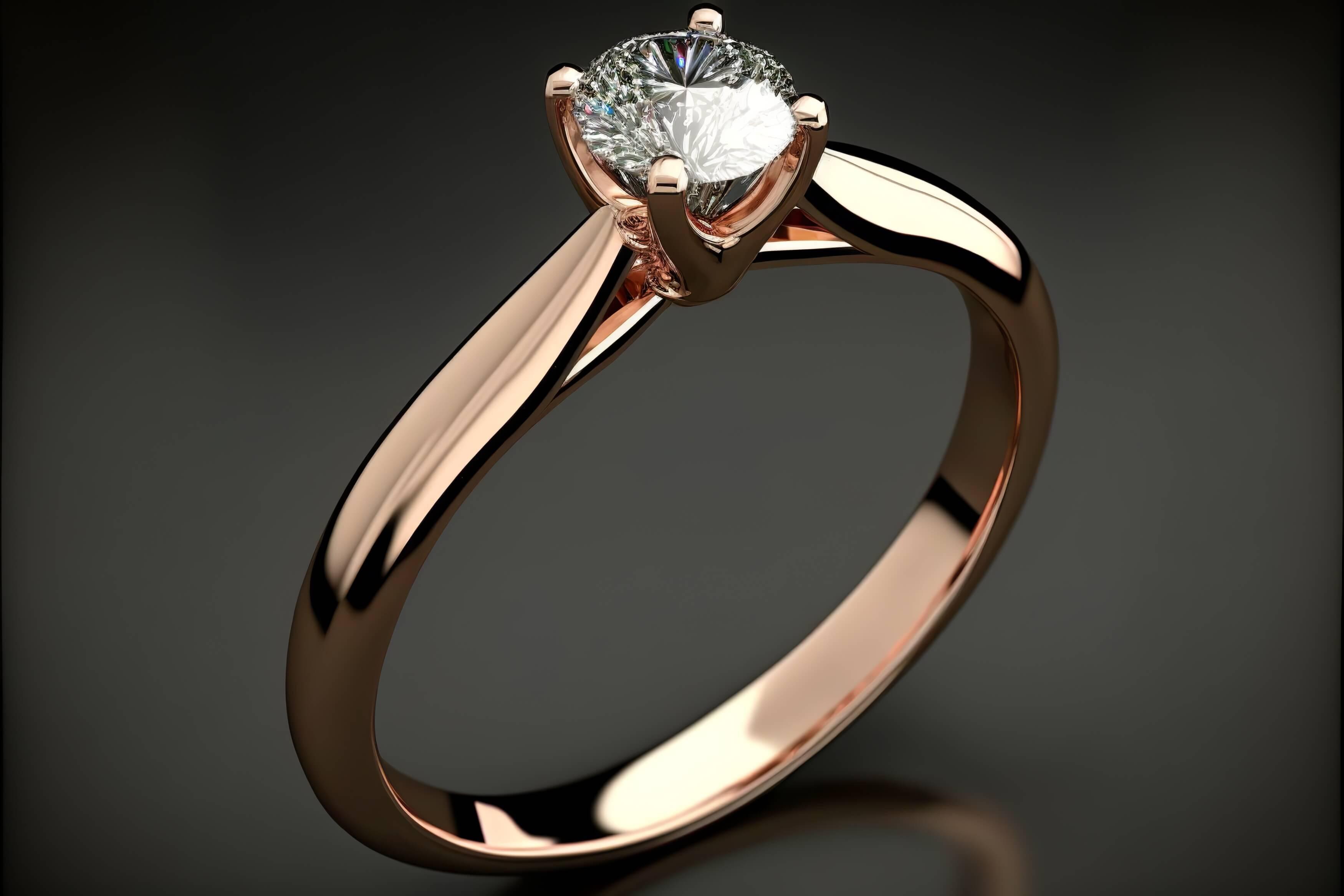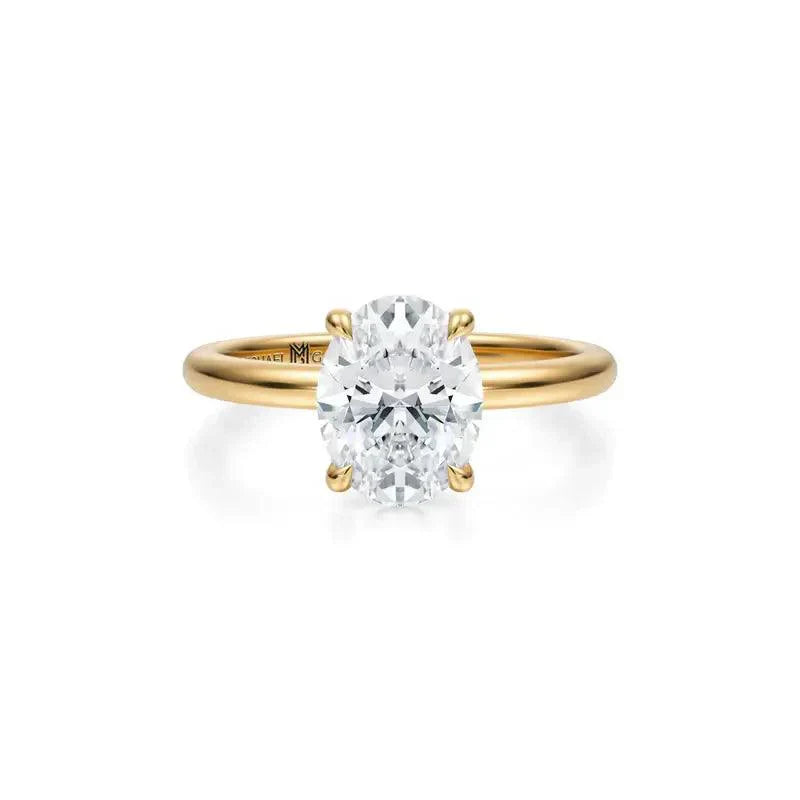
Do Rose Gold Engagement Rings Turn Your Fingers Green?
Have you ever wondered what the red desert sun would look like wrapped around your finger?
(Ok, maybe that's just me.)
In any case, it would look a lot like rose gold, or some variation of it; especially if you added some diamonds for a bit of sparkle (or a great enormous amount of sparkle).
Of course, rose gold won’t make anyone into an Arabian knight who’ll sweep their love off their feet, but it is the most romantic metal for jewelry.
Indeed, rose gold has never had the popularity of classic yellow gold or brilliant white gold, but its dreamy warmth and subtle fleshy hue still make it the darling of many a finger, and the prize piece of many a collection.
Is rose gold real gold?
It certainly is real gold, or at least, it contains real gold. (The FTC regulations are very strict about the use of the term…)
We’ll go further into that a little further down in this piece.
What is Rose Gold?
It is an evocative gold alloy that includes enough copper to tint the metal to a range between that baby pink you see in the sky at the edges of the horizon on a bright day after a rainstorm, and the red ochre of freshly picked Honeycrisp apples in a crate at a farmstand. Yum!
Its history is actually quite interesting.
While colored gold has been played with by smiths for millennia, rose gold as we know it today was not invented until the 19th century, in Russia (and originally called Russian gold, though that term has become obsolete.)
Its claim to fame was the extensive use made out of it by the master smiths of the House of Faberge in St. Petersburg. They used it in, among other fine pieces, the legendary Faberge Eggs.
It caught on in the rest of the world and, like jazz, has had a constant following ever since, even if it doesn’t always top all the pop charts.
How is rose gold made?
It is an alloy made out of gold and copper, and sometimes a small percentage of another metal, normally silver, nickel, zinc or silicone.
The proportion of gold to other metals follows the fraction represented by numbers of karats out of 24k (which is pure gold). So 14k rose gold would be 14 parts gold to 10 parts copper or copper and another metal. 18k rose gold would be 18 parts pure gold to 6 parts copper or copper and another metal.
There are many variations, ranging from 9 to 19 karats, and sometimes they are named with variations of the nomenclature. So a higher copper content might beget red gold, and a higher gold content could be called pink gold.
While copper is a more durable metal than gold, that's not by much, so pink hue 18k gold may be subject to more wear.
Check with your jeweler about the specific proportions of the varieties they offer to get a more accurate idea of what you might be wearing.
Is it right for you?
Rose gold’s blushing character is both innocent and sensual and adds tremendous personality to your engagement ring or other fine jewelry.
Is rose gold more expensive than yellow gold?
Depending on the jeweler, it may be more or less expensive than yellow gold. It is largely due to their supply and manufacturing capabilities. At Michael Gabriels, our rose gold is set at the same prices as our yellow gold of equivalent karat.
Does 14k rose gold tarnish?
The 14k and 18k rose gold that we have at Michael Gabriels does not tarnish.
Does rose gold fade?
Like all gold alloys, rose gold does wear, and as a result, will lose its luster. How long depends entirely on how much wear and tear it contends with. On average a rose gold engagement ring or wedding ring will need to be re-polished every 5 years or so.
When you get it back after being repolished, it’ll look as it had when you first got it.
Otherwise, no, rose gold does not fade.
Is rose gold hypoallergenic?
No, it is not hypoallergenic. Depending on the alloy, and if your sensitivity is to copper or nickel, or another metal, you may get an allergic reaction.
The good news is that rose gold alloys do not always contain nickel, the most common metal allergy, and copper allergies are very rare, so don’t give up hope before you discuss it with your jeweler or get testing done by a dermatologist.
At Michael Gabriels, we have nickel-free rose gold.
Does rose gold turn your fingers green?
Real rose gold will not turn your fingers green.
How to clean Rose Gold
Like with the care given to all gold alloys, you should avoid putting your rose gold jewelry in contact with heavy abrasives or strong chemicals.
However, rose gold in particular is susceptible to reactions with chlorine and with compounds containing sulfur, so avoid wearing it extensively in the pool, or while working with gunpowder.
Otherwise, just wash it with warm water and mild soap and dry it with a soft cloth.
If you have nicks, scratches, or dings, or if it simply no longer gleams the way it did when new, bring it to a jeweler for polishing.
We wrote more about taking care of gold jewelry in a previous article, which could be especially helpful for rose gold engagement rings.
At Michael Gabriels
At Michael Gabriels we use only recycled metals, which are environmentally sustainable and cost effective. We can also offer all our colored golds at equal pricing based on karat. This is just one of the many ways in which we have tried to simplify the customization or bespoke design process on your end. Take a look at our collection online of customizable items such as lab-grown diamond engagement rings or tennis bracelets, wedding rings and other fine jewelry.
Contact us on Instagram or online to make an appointment at our Soho showroom, or if you are in the neighborhood, just pop by. We will be happy to help you design the perfect piece you or your loved one will love for a lifetime.



